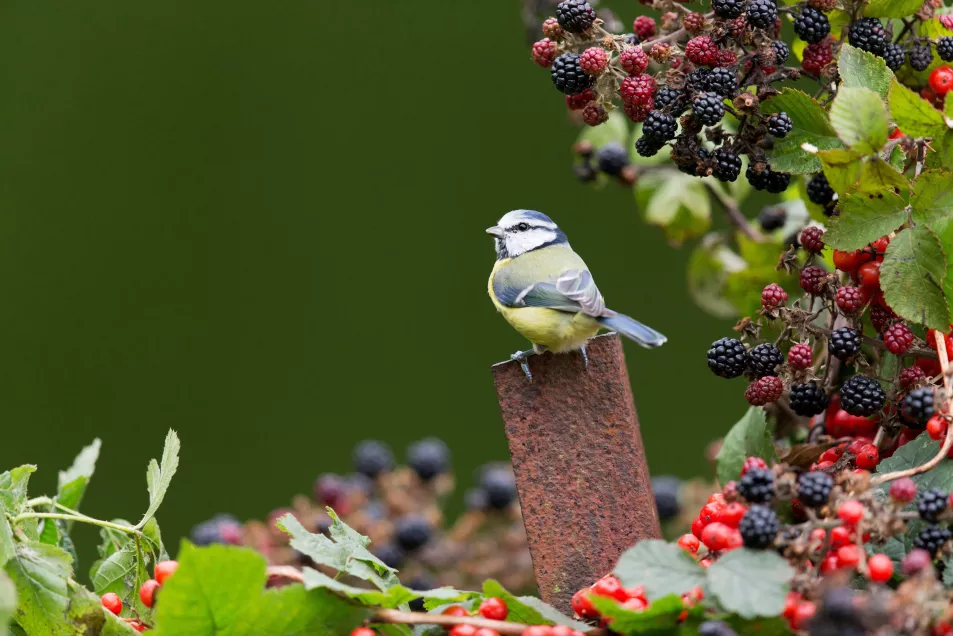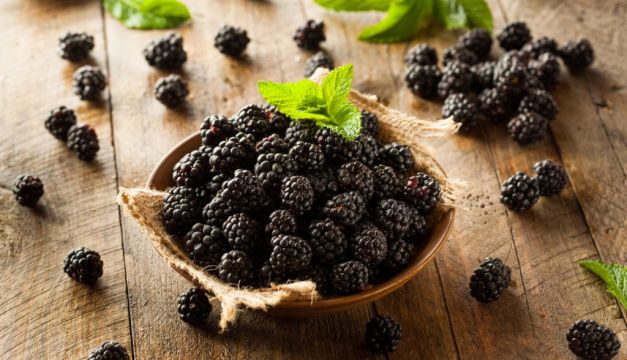It’s blackberry season, and if you’re lucky enough to live in the countryside or near hedgerows, you could be picking tubs of them now to freeze, rather than spending €2.50 a punnet at the supermarket.
Blackberries are delicious in crumbles, compotes, jams and mousses, or added to cocktails and syrups – and with the recent heavy rainfall, you don’t want to delay picking them. But if you’re in an urban area, which doesn’t have a ready supply of brambles for foraging, these delicious fruits are really easy to grow – even if you don’t have much space.
There are compact varieties, thornless types and various hybrids, including tayberries and loganberries, all of which are not difficult. Here’s what you need to know…
Easy to grow
Blackberries can thrive in most situations, including exposed areas, north-facing plots and in clay soil, although the ideal situation is in a sheltered spot with well-drained soil. Plant bare-rooted canes in November or December.
Good for camouflage
If you want to hide an unsightly fence in your garden, choose a modern blackberry variety. Long, arching canes may give you up to 25lbs of fruit per plant and the plant may remain productive for around 20 years. You can attach wire horizontally along the fence and train the blackberry stems to it.
Need support
If you don’t have a fence or shed to support them, put up a post and galvanised wire fence about 5ft high, with two or three horizontal wires spaced evenly apart, spanning around 3m (10ft), training the stems along the wire with soft twine. You can train a more compact variety against a fence which spans 1.8m (6ft).
Smaller plots are fine
If you have a small plot, go for a compact variety such as ‘Loch Tay’, which has short, thornless canes.
May suit vertical planting
Instead of planting an ornamental climber, consider a thornless blackberry such as ‘Oregon Thornless’ or ‘Loch Ness’ to climb over a pergola, which should give you plenty of fruit for those autumn pies and won’t scratch you when you brush past them.
Growing maintenance
Make sure the ground is well weeded before you plant, and keep it clear of weeds while the blackberry canes are growing. Add plenty of organic matter to the soil before planting, water the plants regularly in dry weather, and keep the soil moist when the fruit is set. Mulch in spring with compost or well-rotted manure, then add a general purpose feed and water it in.
Protect from birds

Visiting birds will take their share of ripening berries, so protect the fruits with netting.
How to prune
Blackberries can be pruned after harvesting in summer or autumn. Fruit is produced on two-year-old canes (the previous season’s growth). So, in the first year of planting, canes produce shoots from the soil and put on several metres of growth. The following year, lateral shoots appear on the long stems. These shoots flower and produce fruit in the summer, then die off in winter.
Keep this year’s fruiting canes separate from young new canes by tying new canes in a vertical bunch in the centre, and then training them along the top wire, and tying the fruiting canes to the wires below. When all the fruit has been picked, the old canes can be cut back. Then you can lower the new canes, which have been growing vertically on to the wires below, which will provide next year’s fruit.
While blackberries are hardy, you may have to remove frost-damaged growth in spring, cutting back dead shoot tips.
When to harvest

Pick when the fruits are coloured and you can pull each blackberry gently away from the stem. If you pick overripe fruits, they all but disintegrate in your hand. Harvest them on dry days and freeze immediately if you want them for later.
Some will be ready in late summer, others in autumn depending on the variety. Good varieties include ‘Veronique’, a thornless type with a semi-upright habit, which is suitable for fanning over a 6ft fence panel and produces fruits in late summer. Plus ‘Black Butte’, a vigorous type, which produces berries twice the size of many blackberries, and ‘Loch Ness’, which has stout stems requiring little support and should be ready for picking in late August and September.
How to freeze
Give the harvested fruit a quick wash in a colander, put the berries on a baking sheet and place them in the freezer. Once they are frozen, you can bag them up and return them to the freezer. They should be good for around six months.







